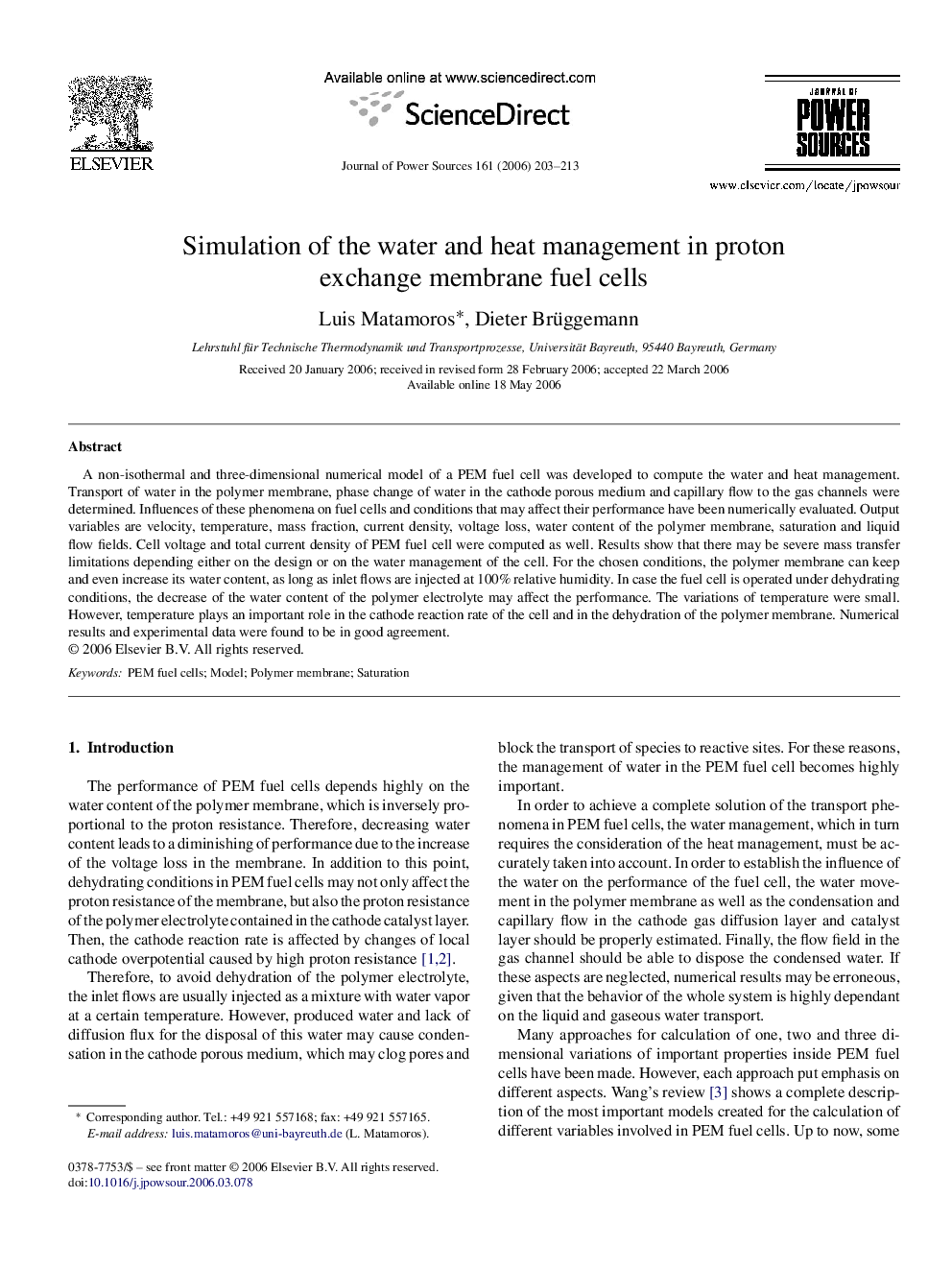| Article ID | Journal | Published Year | Pages | File Type |
|---|---|---|---|---|
| 1286990 | Journal of Power Sources | 2006 | 11 Pages |
A non-isothermal and three-dimensional numerical model of a PEM fuel cell was developed to compute the water and heat management. Transport of water in the polymer membrane, phase change of water in the cathode porous medium and capillary flow to the gas channels were determined. Influences of these phenomena on fuel cells and conditions that may affect their performance have been numerically evaluated. Output variables are velocity, temperature, mass fraction, current density, voltage loss, water content of the polymer membrane, saturation and liquid flow fields. Cell voltage and total current density of PEM fuel cell were computed as well. Results show that there may be severe mass transfer limitations depending either on the design or on the water management of the cell. For the chosen conditions, the polymer membrane can keep and even increase its water content, as long as inlet flows are injected at 100% relative humidity. In case the fuel cell is operated under dehydrating conditions, the decrease of the water content of the polymer electrolyte may affect the performance. The variations of temperature were small. However, temperature plays an important role in the cathode reaction rate of the cell and in the dehydration of the polymer membrane. Numerical results and experimental data were found to be in good agreement.
